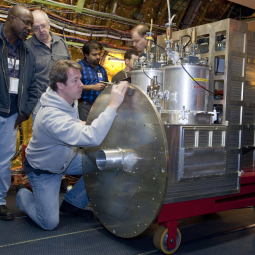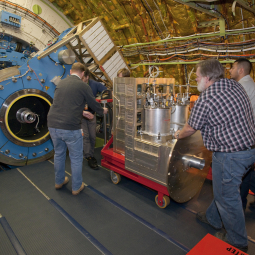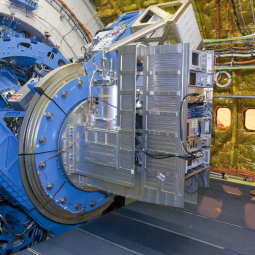The German Receiver for Astronomy at Terahertz Frequencies, or GREAT, instrument was successfully mounted on the Stratospheric Observatory for Infrared Astronomy, or SOFIA, airborne observatory for the first time on Jan. 21, 2011. A number of tests will follow before the first scientific flights of SOFIA with GREAT take place in April 2011.
"Thanks to all who participated in the project over the years and contributed to the completion of the instrument," said Rolf Guesten, principal investigator for GREAT at the Max Planck Institute for Radio Astronomy in Bonn, Germany.
The GREAT instrument is a receiver for spectroscopic observations at far-infrared frequencies between 1.2 and 5 terahertz (60-220 µm wavelength) that are not accessible from ground-based telescopes because of atmospheric water vapor absorption. GREAT was built as one of two German first generation instruments for SOFIA by a consortium of German research institutes, including the Max Planck Institute for Radio Astronomy, the University of Cologne in Germany, the German Aerospace Center and the Max Planck Society in Lindau, Germany. The Max Planck Society and German Research Society financed the development of the instrument.
The SOFIA program includes a high-altitude airborne observatory consisting of a German-built 2.5-meter (100 inch) infrared telescope mounted in a cavity in the rear fuselage of a highly modified Boeing 747SP jetliner.
SOFIA is a joint venture of NASA and the German Aerospace Center. NASA supplied the aircraft. The telescope was built in Germany. NASA's Dryden Flight Research Center manages the SOFIA program. The aircraft is based at NASA's Dryden Aircraft Operations Facility in Palmdale, Calif. NASA's Ames Research Center at Moffett Field, Calif., manages SOFIA's scientific program. The Universities Space Research Association, in Columbia, Md., and the German SOFIA Institute in Stuttgart, Germany, operate SOFIA's scientific program.
Points of Contact
Beth Hagenauer
NASA Dryden Flight Research Center, Edwards, Calif.



